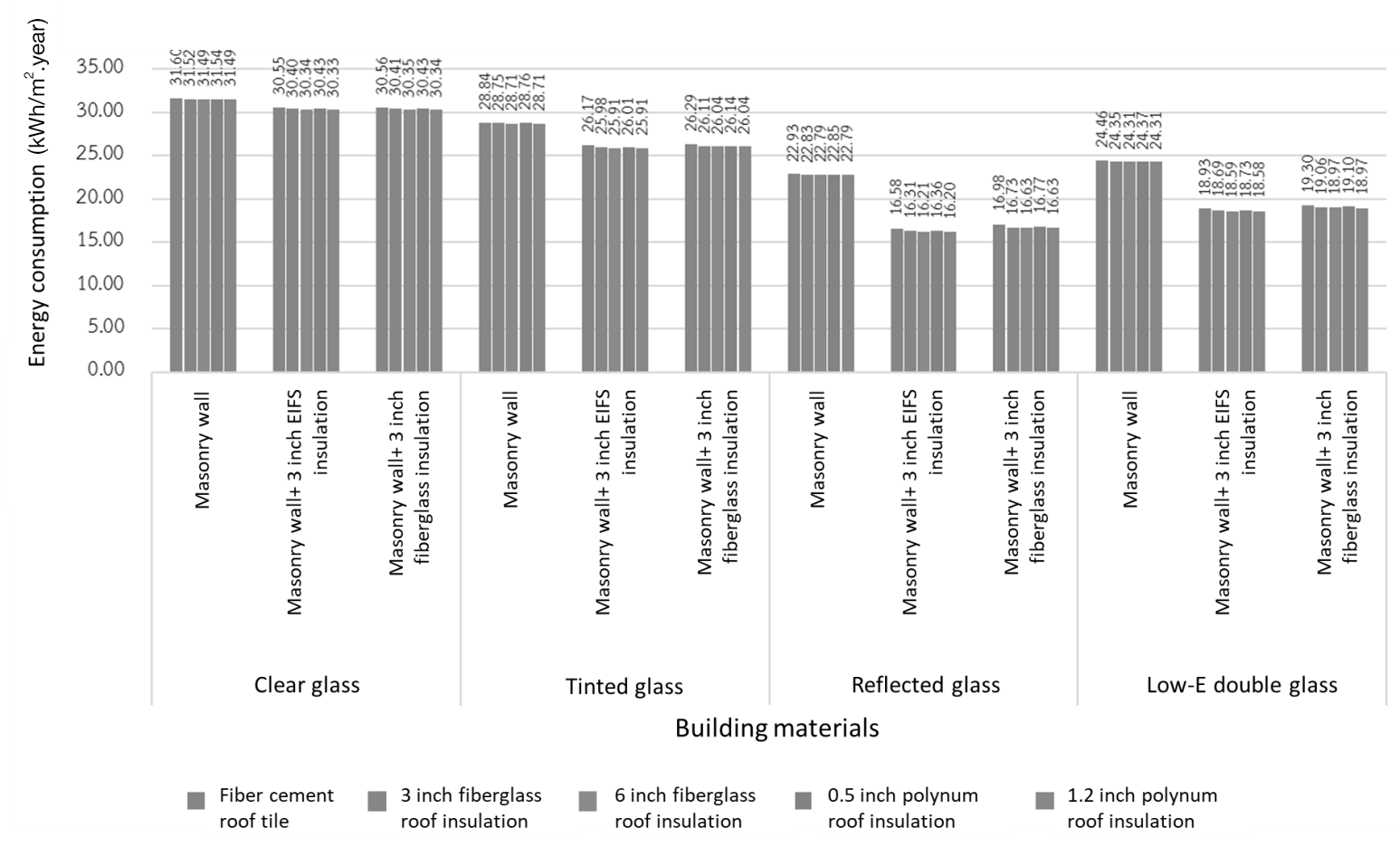Guideline for Investment in Building Enclosure Retrofit to Improve Home Energy Efficiency Based on Thailand Energy and Environmental Assessment Method
Main Article Content
Abstract
This study analyzes the payback periods of building enclosure retrofits related to energy saving score obtained from Thailand Energy and Environmental Assessment rating system. The retrofit methods focus on replacing high performance windows, installing wall and roof insulations with 54 detached houses. The cooling electricity consumptions are performed using eQUEST 3.64 and the returns gained from the envelope retrofits are calculated using the simple payback period method. It is found that improving high performance window could significantly reduce the cooling electricity consumption followed by adding the wall and roof insulations, respectively. Within 20 year payback periods, the average electricity saving after retrofitting is 30 percent. Lastly, the most effective envelope retrofits, considering financial investment as well as energy saving score, are proposed. The studies’ results could help homeowners decide and select those techniques to improve their home envelope for energy efficiency.
Downloads
Article Details

This work is licensed under a Creative Commons Attribution-NonCommercial-NoDerivatives 4.0 International License.
All material is licensed under the terms of the Creative Commons Attribution 4.0 International (CC-BY-NC-ND 4.0) License, unless otherwise stated. As such, authors are free to share, copy, and redistribute the material in any medium or format. The authors must give appropriate credit, provide a link to the license, and indicate if changes were made. The authors may do so in any reasonable manner, but not in any way that suggests the licensor endorses you or your use. The authors may not use the material for commercial purposes. If the authors remix, transform, or build upon the material, they may not distribute the modified material, unless permission is obtained from JARS. Final, accepted versions of the paper may be posted on third party repositories, provided appropriate acknowledgement to the original source is clearly noted.
References
Bardhan, A., Jaffee, D., Kroll, C., & Wallace, N. (2014). Energy efficiency retrofits for U.S. housing: Removing the bottlenecks. Regional Science and Urban Economics, 47, 45–60. DOI: 10.1016/j.regsciurbeco.2013.09.001
Dianshu, F., Sovacool, B. K., & Vu, K. M. (2010). The barriers to energy efficiency in China: Assessing household electricity savings and consumer behavior in Liaoning Province. Energy Policy, (38), 1202–1209.
Frederiks, E. R., Stenner, K., & Hobman, E. V. (2015). Household energy use: Applying behavioural economics to understand consumer decision-making and behaviour. Renewable and Sustainable Energy Reviews, 41(Supplement C), 1385–1394. DOI: 10.1016/j.rser.2014.09.026
Inprom, N. (2015). Sensitivity analysis of the impact of building components on Ac electricity consumption in Thai detached house. Thammasat University, Faculty of Architecture and Planning Thammasat University, Architecture.
International Energy Agency. (2007). Existing policy responses to financial barriers (Financing energy efficienthomes) (p. 52). International Energy Agency. Retrieved from http://www.iea.org/publications/freepublications/publication/FinancialBarrierBuilding-1.pdf
James J. Hirsch and Associates. (2009). eQUEST version 3.64. Retrieved from http://www.doe2.com/equest
Jareemit, D., & Limmeechokchai, B. (2017). Influence of Changing Behavior and High Efficient Appliances on Household Energy Consumption in Thailand. Energy Procedia, 138, 241–246. DOI: 10.1016/j.egypro.2017.10.047
Jareemit, D., Inprom, N., & Sukseeda, J. (2016). Uncertainty distribution in architectural design for detached houses located in Bangkok neighborhoods. In IBPSA-USA Journal (6). Retrieved from http://ibpsa-usa.org/index.php/ibpusa/article/view/358
Ministry of Energy, Department of Alternative Energy Development and Efficiency. (2014). Application Guide for Outstanding Energy Conservation Housing Contest 2014. Bangkok: Department of Alternative Energy Development and Efficiency.
Ministry of Energy, Department of Alternative Energy Development and Efficiency. (2010). Building energy saving and eco-friendly assessment guide Residential Building Model R49.02. Bangkok: Department of Alternative Energy Development and Efficiency.
Sethabutra, A. (2012). Sustainable livelihood assessment criteria for the community: Ecovillage. Bangkok: National Housing Authority.
Sethabutra, A. & Chindavanik, T. (2007). Development of the minimum criteria for thermal protection properties of building enclosures in single-family buildings In Baiyoke Sky Hotel, 3rd Thailand Energy Network Academic Conference (No. 1-13). Bangkok: Author.
Sudprasert, S., & Sakdawattananon, S. (2018). Simulation Study of Applying Thermal Insulation in the Condominium Rooms to Reduce Cooling Energy. International Journal of Building, Urban, Interior and Landscape Technology; BUILT, 11, 7–18. Retrieved from https://www.tci-thaijo.org/index.php/BUILT/article/view/167857
Taepipatpong, K. (2010). Added title page title: Study of materials and window to wall ratio for reducing energy consumption of residential buildings. Thammasat University, Faculty of Architecture and Planning Thammasat University, Architecture.
Wongmahasiri, R. (2015). Policy on energy consumption in residential houses in Thailand and internationally. The Government Housing Bank Journal, 81 (21), 27-33.

